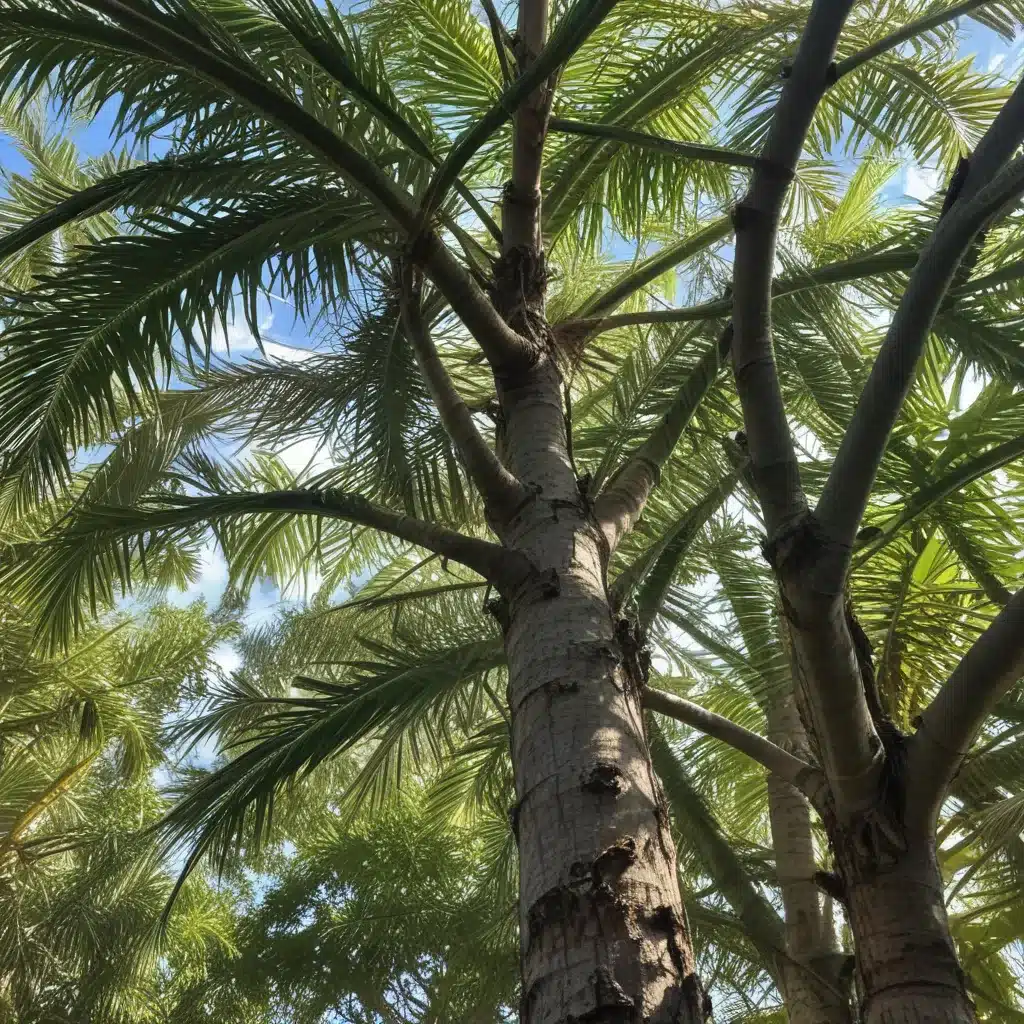
Navigating the Challenges of Invasive Trees
As an experienced tree care specialist in Palm Beach County, I’ve had the privilege of witnessing the dynamic and ever-evolving nature of our urban forest. While the lush greenery and towering canopies provide a picturesque backdrop to our community, there’s an underlying battle brewing beneath the surface. The infiltration of invasive tree species has become a growing concern, posing a threat to the delicate balance of our local ecosystem.
Throughout my years of working with homeowners, property managers, and municipal organizations, I’ve seen firsthand the damage that these non-native intruders can inflict. From the aggressive spread of the Camphor tree to the prolific seeding of the Chinese Tallow, these species have a knack for outcompeting our native flora, disrupting the intricate web of life that sustains our vibrant landscapes.
But as daunting as the situation may seem, I’m here to share my insights and strategies for combating the invasion. It’s not a battle we can simply give up on, as the consequences of inaction could be dire for the long-term health and resilience of our urban forest.
The Importance of Identification and Removal
The first step in our fight against invasive trees is to become intimately familiar with their characteristics. As a tree care specialist, I’ve made it a priority to study the unique features of these troublesome species, from their leaf shapes and bark textures to their growth habits and reproductive patterns.
Take the Camphor tree, for example. Its shiny, aromatic foliage and towering stature may seem innocuous at first glance, but this tree is a true opportunist, quickly establishing itself in disturbed areas and crowding out native species. Similarly, the Chinese Tallow, with its vibrant fall foliage and distinctive fruit capsules, has a knack for spreading rapidly through seed dispersal, making it a constant challenge to manage.
Recognizing these invasive trees is the first step, but the real battle lies in their removal. I’ve found that a comprehensive, multi-pronged approach is often the most effective strategy. This may involve manual removal of saplings, targeted application of herbicides on mature specimens, and even the use of specialized equipment to tackle those that have become deeply entrenched.
The Importance of Native Species in Restoration
As we work to eradicate invasive trees, it’s crucial that we also focus on the restoration and protection of our local, native tree species. These plants have evolved in harmony with the surrounding ecosystem, providing crucial resources and support for a diverse array of wildlife, from pollinating insects to migratory birds.
By thoughtfully selecting and planting native trees, we can not only strengthen the overall health of our urban forest but also contribute to the preservation of our region’s unique biodiversity. Species like the Live Oak, with its expansive canopy and resilience to storms, or the Bald Cypress, with its striking autumn hues, are just a few examples of the vibrant and ecologically valuable trees that should be prioritized in our landscaping efforts.
Engaging the Community in Stewardship
As a tree care specialist, I’ve learned that the battle against invasive species is not one that can be won alone. It requires the collective efforts of homeowners, businesses, and local government agencies to truly make a lasting impact.
That’s why I’m a strong advocate for community engagement and education. By sharing my knowledge and expertise with residents, I’ve seen firsthand the power of empowering individuals to take an active role in the stewardship of our urban forest. Simple actions, such as identifying and removing invasive seedlings on their own properties, can have a ripple effect that amplifies our efforts exponentially.
Furthermore, I’ve worked closely with local authorities to develop comprehensive management plans that address the threat of invasive trees at a broader, municipal level. This collaborative approach ensures that our strategies are aligned, maximizing the impact of our collective efforts.
Adapting to Climate Change and Storm Resilience
As we continue to battle the encroachment of invasive species, we must also acknowledge the looming challenge of climate change and its impact on the health and resilience of our urban forest. Extreme weather events, such as the powerful hurricanes that have battered our region, pose a significant threat to the trees that provide us with invaluable shade, storm protection, and environmental benefits.
In response, I’ve made it a priority to incorporate climate-smart practices into my tree care recommendations. This includes promoting the planting of wind-resistant native species, strategically positioning trees to minimize damage from high winds, and implementing proactive pruning and maintenance regimes to strengthen their structural integrity.
By taking a holistic, forward-looking approach, we can not only safeguard our trees against the impacts of climate change but also ensure that our urban forest remains a resilient and adaptive cornerstone of our community for generations to come.
Conclusion: A Collaborative Effort for a Greener Future
As a tree care specialist in Palm Beach County, I’ve witnessed the ongoing battle against invasive species with a sense of both challenge and optimism. While the threat posed by these non-native intruders is real and persistent, I firmly believe that through a combination of strategic removal, native species restoration, and community engagement, we can emerge victorious.
By working together with homeowners, businesses, and local authorities, we can safeguard the health and vitality of our urban forest, ensuring that it continues to provide the invaluable environmental, economic, and social benefits that our community has come to cherish. It’s a responsibility that we all share, and one that I’m proud to be a part of as a dedicated tree care professional.
So, let’s continue to branch out, explore innovative solutions, and cultivate a greener, more resilient future for Palm Beach County. Together, we can overcome the challenges of invasive species and ensure that our urban forest remains a true source of pride and sustainability for years to come.
Visit https://www.treeservicespalmbeachcounty.com to learn more about our comprehensive tree care services and how we can work together to protect and enhance the urban forest in your neighborhood.



